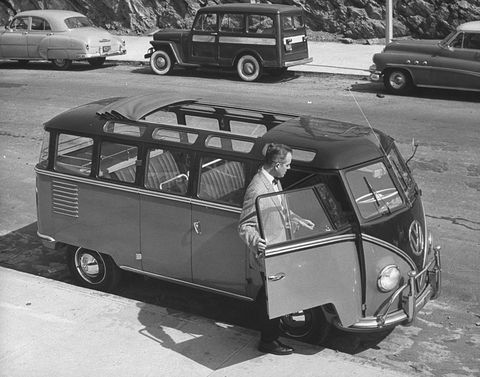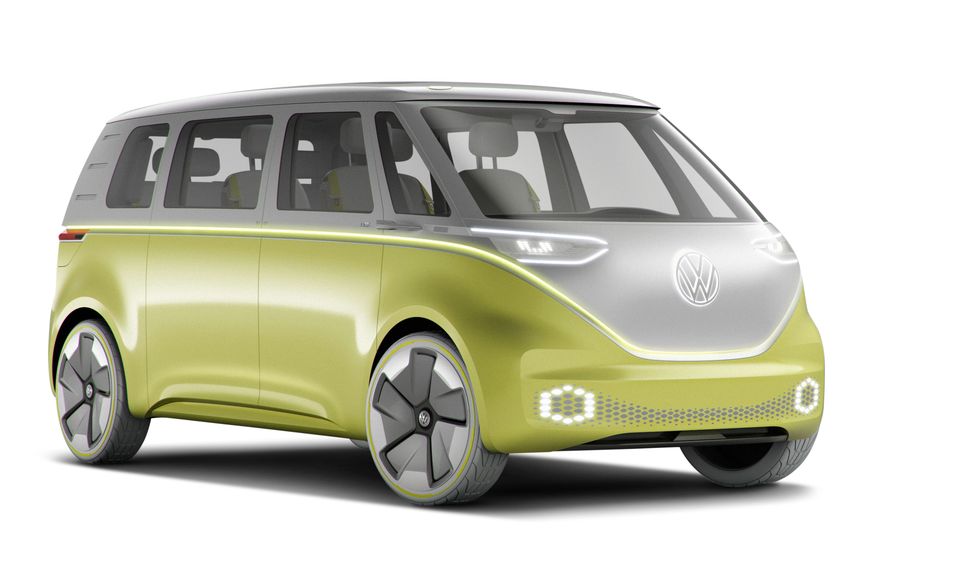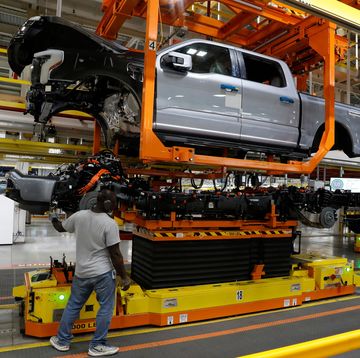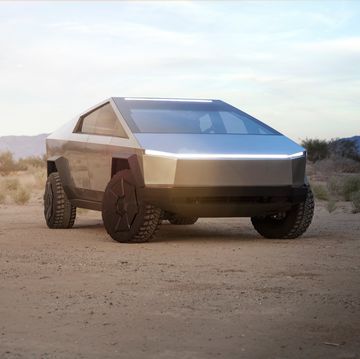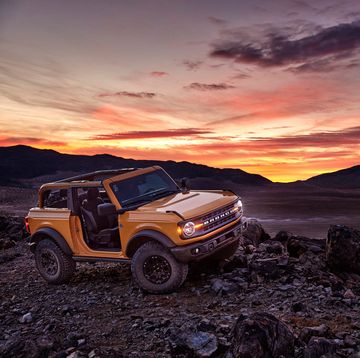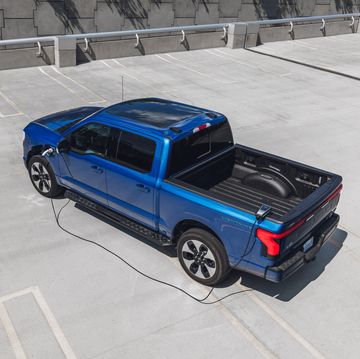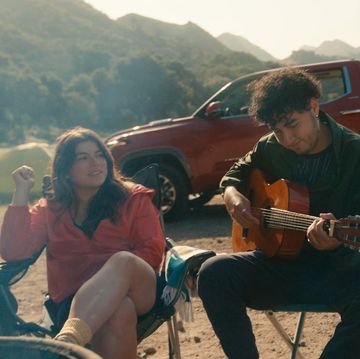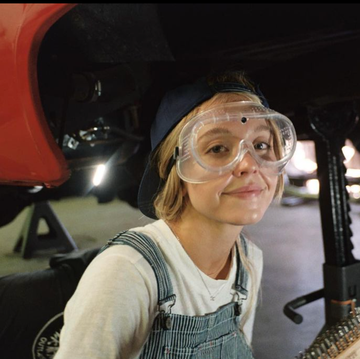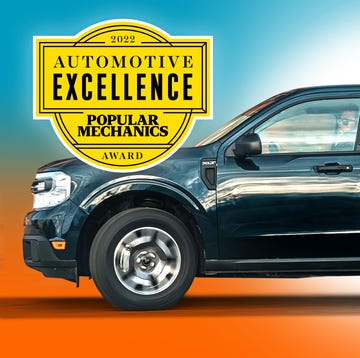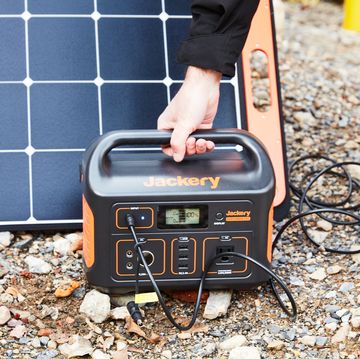It started out life as a drawing so humble it could have come from the notebook of kid in elementary school. Sometimes simple is smart.
In 1949, Ben Pon was a Volkswagen importer was bringing the first VW Beetles to the United States, but something besides the Bug captured his imagination. Pon saw and fell in love with the utilitarian work trucklets the company used around the factory, which were based on the same rear-engined chassis configuration as the Beetle. He sketched a van version on a piece of paper. It looked like an overgrown loaf of bread, but VW executives were impressed by what they saw and created the microbus, building it on Beetle mechanicals including the rear-mounted air-cooled flat four-cylinder engine. In 1950, it officially greeted the world as the Type 2 Transporter (the VW Beetle was Type 1).
The microbus was so new and so original when it burst upon the scene that more than a decade would pass before any real competitor showed up. This was the original minivan, a dedicated people-mover, but the bus was much more than a pedestrian family hauler, of course. It was embraced by surfers, hippies, campers and anyone that appreciated simplicity, efficiency, and adventure.
One of the world's most recognizable and beloved vehicles, the slab-sided VW was sold in America for 41 years and over three generations until the very last ones—the more modern water-cooled Vanagon—left our shores in 1991. The earliest first-generation split-windscreen models, dating from 1950 to 1967 have become the most iconic and cherished by collectors. Values of desirable models like the Samba, with skylight roof windows and a large cloth sunroof, have risen to supercar levels.
VW knows the classic microbus is having a bit of a moment right now. At the North American International Auto Show in January, the company showed the world a very handsome and production-feasible microbus concept—the all-electric I.D. Buzz. If bus fans have their way, we might see a version of this electric vehicle in VW dealerships soon, reinventing this icon of simplicity for a new century.
Boxy But Beautiful
Part of the microbus genius lies in its cab-over configuration. There is no engine and hood sticking out past the windshield. VW stuck the bus's air-cooled four-cylinder in the back, as with the Beetle. That allowed the driver to sit directly on top of the front wheels to create both an incredible view ahead and a vast space behind for passengers or cargo, and created that classic flat front.
"If you think of the 1950s, big American cars with bold grill statements were everywhere," says Stewart Reed, chair of the Transportation Design Department at Art Center College of Design in Pasadena, CA. "When you encountered a microbus with a full painted face, two-tone trim and a big VW badge—that was something completely different coming at you on the street."
The design got the most out of the vehicles' footprint, Reed says. Indeed, the early microbus has an overall length exactly the same as today's VW Golf. The tidy dimension and flat platform floor meant it had uses beyond simply hauling large families around. VW produced commercial and military versions too—including panel vans and pickup trucks based on the bus.
Here in America, the friendly face of the Microbus was (and still is) seen parked beachside loaded with surfboards on their roofs. There's good reason for that. The interior was purposely plain, with rubber mats on the floor. That meant generations of surfers could stow their boards inside or out without worrying about ruining and carpet. There was none. And there was plenty of space inside to camp out for the night—or just hang and enjoy a beer and a great sunset.
Then, in the late 1960s and early 1970s, the bus became popular with counterculture hippies. "The hippie movement fell in love with the bus for a few reasons," says McKeel Hagerty, classic car market expert and the CEO of Hagerty Insurance. "It was cheap to maintain, easy to work on, and big enough to live in."
Plus, the humble, low-power bus stood in contrast to the potent muscle cars and large, low and luxurious sedans that were popular at the time. "The bus flew in the face of traditional social culture," says Reed. "It was anti-style, anti-success, and rebellious in a totally new way."
Popular comedian and actor Gabriel Iglesias is a microbus fanatic who owns 20 of them. "It's always going to be attached to the 1960s and have that free love, hippie influence," says Iglesias. "And even today that's reflected in our culture. The bus character Filmore in the Cars movie is very much a [representation] of that."
Keep it Slow, Man
The VW microbus was great at many things, but keeping up with traffic wasn't one of them. The first models could carry nine passengers but had engines that delivered a mere 25 horsepower. Now, the bus was deeply geared to make the most of those horses, but even when power improved to 40, it was still really slow. On the twisty, narrow German backroads, that was perhaps not problem. But not here on the open roads of the USA. A typical six-cylinder engine in a 1950s American sedan had more than four times the power of the VW.
The microbus was underpowered and a little pokey on the freeways of the '50s and '60s. Today, it can be downright treacherous to drive.
"I have a 1952 Barn Door (oversize engine door) that is completely stock. When I drove that one home for the first time it was scary," Iglesias says. "It literally felt like you had four people outside pushing you—it was that slow. You're basically a tractor, but it sounds great!"
The upside is that the classic Volkswagen four-cylinder engines have plenty of aftermarket support. There are catalogs of speed parts available. Iglesias has modified several of microbuses with more powerful engines that make in the neighborhood of 150 hp so he can keep up with traffic.
But you've got to be careful juicing up this ride. With a short wheelbase, narrow track-width, and soft rear suspension, the bus gets a little... tippy at speed. It's best not to corner the bus too aggressively, as Iglesias found out during one very memorable moment.
"I was turning onto a freeway and I was going way too fast. In a regular car—not a problem. But the bus sits very high and I was trying to cut the wheel too hard," he says. "I actually got the van up on two wheels. I straightened the wheel and I felt the whole van drop. I just pulled over—that freaked me out."
Room with A View
The bus is slow, sure, but the experience behind the wheel is anything but dull. Plodding along in a bus provides the driver and passengers a chance to enjoy the scenery. The early ones feel airy thanks to windows that open out all the way around the vehicle. The driver sits tall in the microbus too. Iglesias digs that view. "You're sitting all the way to the front and up high," he says. "That's what's so cool about it—you can literally see everything around you."
Those windows determine the rarity, value, and popularity of some VW buses. The more windows, the better. The 21-window models not only have conventional windows at eye level but also four additional windows on each side along the roof aimed at the sky. The 23-window models have two additional windows on the rear corners. These models bring more light to the cabin along with panoramic views. The microbus nickname really described what the experience was like in these multi-window buses.
"Micro bus…that's exactly what it was. It was a scaled down city tour bus," says Reed. "And in Europe those touring buses had the same windows up high, so you could see the mountains or the tall buildings in the city."
It's no wonder driving or riding in an old bus is a cheerful experience. It automatically puts you in the vacation mindset.
Today, the early split front window buses with and 21 and 23 window bodystyles are incredibly popular and highly valuable. A decade ago, these machines in average condition would sell for around $20,000. Today, those same vans could command double that price, according to Hagerty, and that's just average condition. Pristine examples routinely trade north of $100,000 at auction. At the Barrett-Jackson Scottsdale auction in January 2017, a restored and modified 21-window bus from 1965 sold for a nearly unfathomable record price of $302,500.
"Five years ago, millennials only accounted for 12 percent of buses we quoted, now they account for 20 percent," says Hagerty. "This means that the VW bus is thriving in the generational shift of collectors."
And that means the timing is right for VW to build an all-new microbus.
Catching the Buzz
VW has been toying with the idea of a new version of the classic bus for a while now. The first retro revival came in 2001 with a front-drive microbus concept that looked convincing but was never produced. A decade later, VW showed the Bulli (a microbus nickname) concept that was smaller and powered by an electric powertrain. It too remained a show vehicle.
Perhaps the third time will be the charm. At this year's Detroit Auto Show, the company unveiled the I.D. Buzz. This is a larger microbus concept based on the company's new Modular Electric Drive EV architecture. Having the big battery pack baked into the floor frees up space in the cabin, creating a flat floor and a roomy environment not unlike that of the original microbus. The concept alos previews the company's autonomous technology, so the driver can let the van do the driving, swivel the seat around, and enjoy the ride with passengers.
"The I.D. Buzz is really austere, simple, and timeless. And it's the ideal shape to show something that could be autonomous," Reed says. "In an autonomous vehicle environment, if you do want rotate the front seats 180 degrees, most cars' architecture won't work. A box-shaped vehicle extruded vertically is perfect."
The I.D Buzz makes sense for a production vehicle today. VW is already developing an architecture that can support it. And a practical people mover wrapped in a retro wrapper would almost certainly be a hit. "They absolutely have to build it," Reed says. "It's so overdue and there's just such an incredible appetite for it."

Ben is a lifelong enthusiast of anything with wheels. He has been contributing to Popular Mechanics for nearly 20 years and lives in Venice with an eclectic collection of vintage pickup trucks, muscle cars, and motorcycles scattered in various garages around SoCal.

